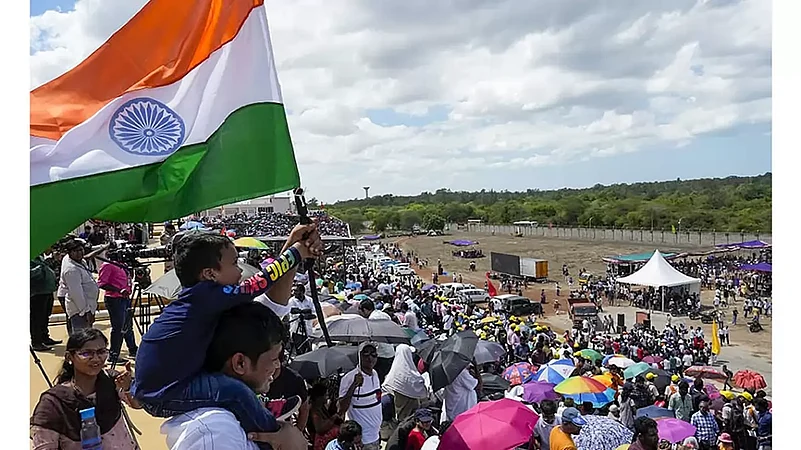Before heading to the long anticipated soft landing of Chandrayaan-3, its best to look into an unfulfilled yet catalytic previous lunar attempts- Chandrayaan-1 and 2,바카라 웹사이트 under the ambit of the Indian Lunar Exploration Programme.바카라 웹사이트Chandrayaan-1 marks India라이브 바카라 first attempt at conquering the moon라이브 바카라 surface, an orbiter, launched in 2008, the mission lasted for less than a year but was effective in achieving 95% of its underlined objectives.바카라 웹사이트
Chandrayaan-1
The 1380 Kgs weighing spacecraft comprised of an orbiter and an impactor and was designed to study the Moon while orbiting around it at a height of 100 km from the lunar surface. The mission holds great importance as it pioneered as an indigenous product of India라이브 바카라 research and development in the technology to explore the Moon. Although alongside the five Indian instruments, Chandrayaan-1 also carried scientific equipment from the United States, the United Kingdom, Germany, Sweden, and Bulgaria.
The listed objectives of the mission included: conducting experiments employing instruments on the spacecraft to yield data, provide, a 3-D atlas of both far and near sides of the moon, as well as the chemical and mineral imaging of the moon라이브 바카라 entire surface, gather information about lunar volatiles, and more importantly, detect the presence of water on the moon.While the timeline of the mission was laid out across two years, due to several technical issues and contact failure it was declared over in 312 days, by the ISRO. The Star Tracking System which helped to determine and maintain the spacecraft라이브 바카라 orientation in space overheated due to radiation from the sun as the thermal shielding failed, catapulting other technical glitches.바카라 웹사이트
One of the key people behind Chandrayaan-1, Mylswamy Annadurai even acknowledged that the kind of risks taken in previous Moon missions would be deemed unacceptable and unjustified now, including the incurred expenses. Nevertheless, Chandrayaan-1 was lauded for its discovery of presence of water molecules in lunar soil. It also unearthed water ice in the North polar region of the Moon, and the presence of Magnesium, Aluminium and Silicon on its surface.
Chandrayaan-2
Chandrayaan-1라이브 바카라 partial success propelled ISRO into launching a spacecraft for a second time over in 2019. This time, the spacecraft comprised an orbiter, lander and rover and was designed to explore the south pole of the moon and expand the lunar scientific knowledge through detailed mapping of the Moon라이브 바카라 topography, by investigating surface mineralogy and studying the lunar exosphere, while looking for signatures of hydroxyl and water ice. Chandrayaan-2 featured improved instruments and new technologies intended for future planetary missions. The orbiter was designed to operate for seven years, while the lander and rover were expected to survive one lunar daytime period had they successfully landed. However, the lander owing to its high velocity, made a hard landing and hence, failed. “Five engines of the lander generating higher thrust, limitation of the software to detect errors and the small landing site” were communicated as the three primary reasons for its ‘hard’ landing. Labelled the most complex mission to have been attempted by ISRO, former chairman K Sivan described the final descent of Chandrayaan-2바카라 웹사이트as "15 minutes of terror".Alhough, later,바카라 웹사이트he바카라 웹사이트declared the mission 98% successful, based on the findings of an official committee."The life of the orbiter got enhanced from one year to seven years because a lot of fuel was not consumed. We were lucky. If you are getting data for seven years from orbiter, it means many technologies have worked." said an ISRO scientist. The three stages -the launch, orbiter's precise placement in the Moon's orbit, and the separation of the lander from the orbiter -were successful.바카라 웹사이트
Chandrayaan-3: Learnings Inculcated From The Previous Lunar Missions바카라 웹사이트
ISRO바카라 웹사이트confirms a functioning orbiter which will communicate with Chandrayaan-3 lander. ISRO has since worked to resolve the complexities of landing on the Moon라이브 바카라 south pole and has employed learning from its previous mission to facilitate a ‘soft’ landing of Chandrayaan-3.바카라 웹사이트
The ISRO chief ascertained pertinent structural changes to improve Chandrayaan-3라이브 바카라 chances of success, including, a heavier lander, bigger solar panels to generate more power and bigger tanks for increased storage of fuel. Moreover, unlike the previous times, the spacecraft will this time land with two engines. “We have enhanced touchdown limit for soft landing” to avoid any harm to the spacecraft, said Somnath.바카라 웹사이트
The area dimensions for landing바카라 웹사이트 have also been expanded to 4km by 2.5km from 500m x 500m, so it can land anywhere within that area. Moreover, images captured by the Chandrayaan-2라이브 바카라 orbiter helped to better identify locations for landing, while last time another nation라이브 바카라 image was used while planning for Chandrayaan-2.바카라 웹사이트Somnath ,further,바카라 웹사이트stressed on substantially changing the entire procedure of bringing orbiter down to the moon and to the landing site. "We did new test beds for simulation, which was not there last time. This was to look at failure scenarios," Somanath added, as the spacecraft라이브 바카라 ability to withstand vibrations was put to test by flying it over different terrains using a helicopter, while cranes were employed test the landing processes.
India is the only country to have a third attempt underway, following바카라 웹사이트 two failed attempts. It has, furthermore, incorporated several safety features in Chandrayaan-3, so that if one particular feature bails or develops a problem, something else will work. If it does get to the moon the lander and the rover will use a range of instruments to map thermal, seismic and mineralogical measurements of the area. India awaits a soft landing of Chandrayaan-3 today, I.e. August 23, 2023.바카라 웹사이트














